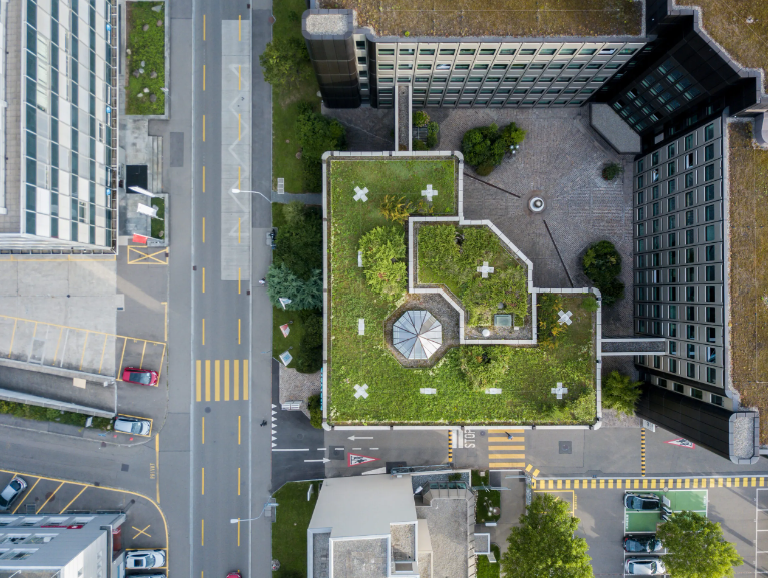Keeping Urban Environments Cool with Green Roofs
Green roofs allow for a building to use 10% less energy during winter months
While typical roofs can have a daily temperature fluctuation of 45oC, green roof temperature fluctuations are just 6oC
A city that uses green roofs can reduce city-wide temperatures by up to 5oF
It takes just 6 years for the cost of a green roof installation to be recouped through savings and benefits
Current Problem
As more of the world continues to urbanize and cities grow, green space is often being replaced by skyscrapers, roads, and other man-made structures. This rapid growth in urban environments in recent decades has led to some unexpected issues.
The standard way to build new structures has focused primarily on cost and reliability of materials, and what went on the rooftop was never a top concern. Unfortunately, that concrete or steel rooftop has led to the unexpected result of urban heat islands. Collectively, these buildings reflect and amplify the heat from the sun, raising the temperatures in cities to dangerous levels beyond what is healthy, a problem only getting worse amid climate change.
Another growing problem with our city landscapes is dealing with stormwater. While natural environments thrive on rain water and can absorb, use, and direct it properly, the concrete jungles that are cities have to build a specific sewer systems to handle heavy rains. Even still, these systems can often fail, which is another issue as extreme weather caused by climate change becomes more common, and run to issues like flooding, water system pollution and contamination, adverse health impacts from standing water, and more.
A key solution to overcome the above challenges of an urbanizing environment comes via reevaluating what these buildings can, and should, look like. Typically rooftops in cities go unused, but a trend in recent years has been to convert urban rooftops into green roofs.
A green roof is defined as a rooftop that has waterproofing membranes along with installations of vegetation and plant life.
Through green roofs plants can perform their natural ‘lung’ function for air quality, they can retain the heat in their soil that would otherwise be expelled and create more drastic hot days, and even reduce the heating and cooling needs of the building underneath them.
Modern green rooftops are not only functional, but also aesthetically pleasing and act as a bit of a green oasis for those who may get overwhelmed by the concrete jungle. From locality to locality, new techniques and implementations are coming along that are worthy of attention.

